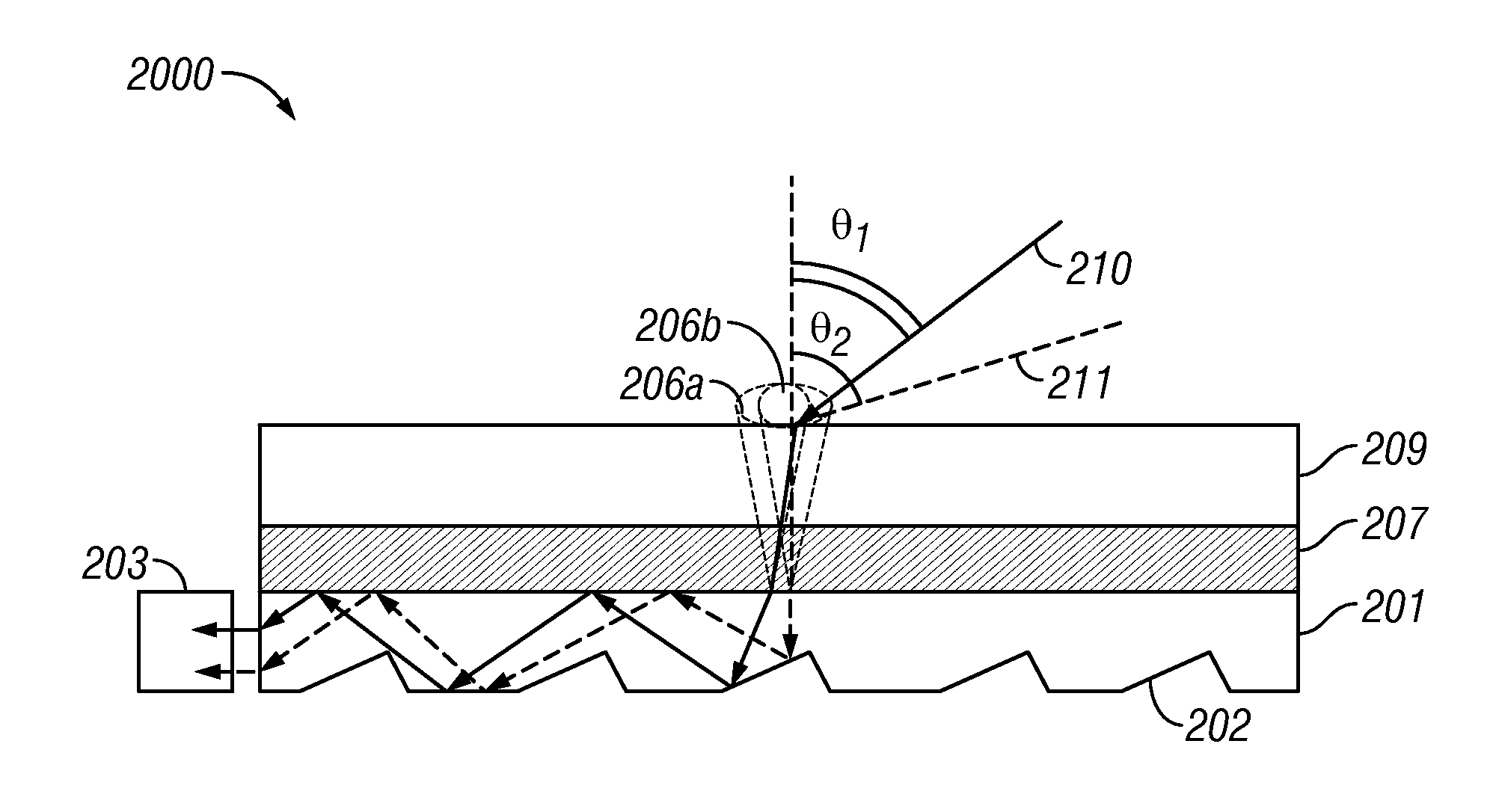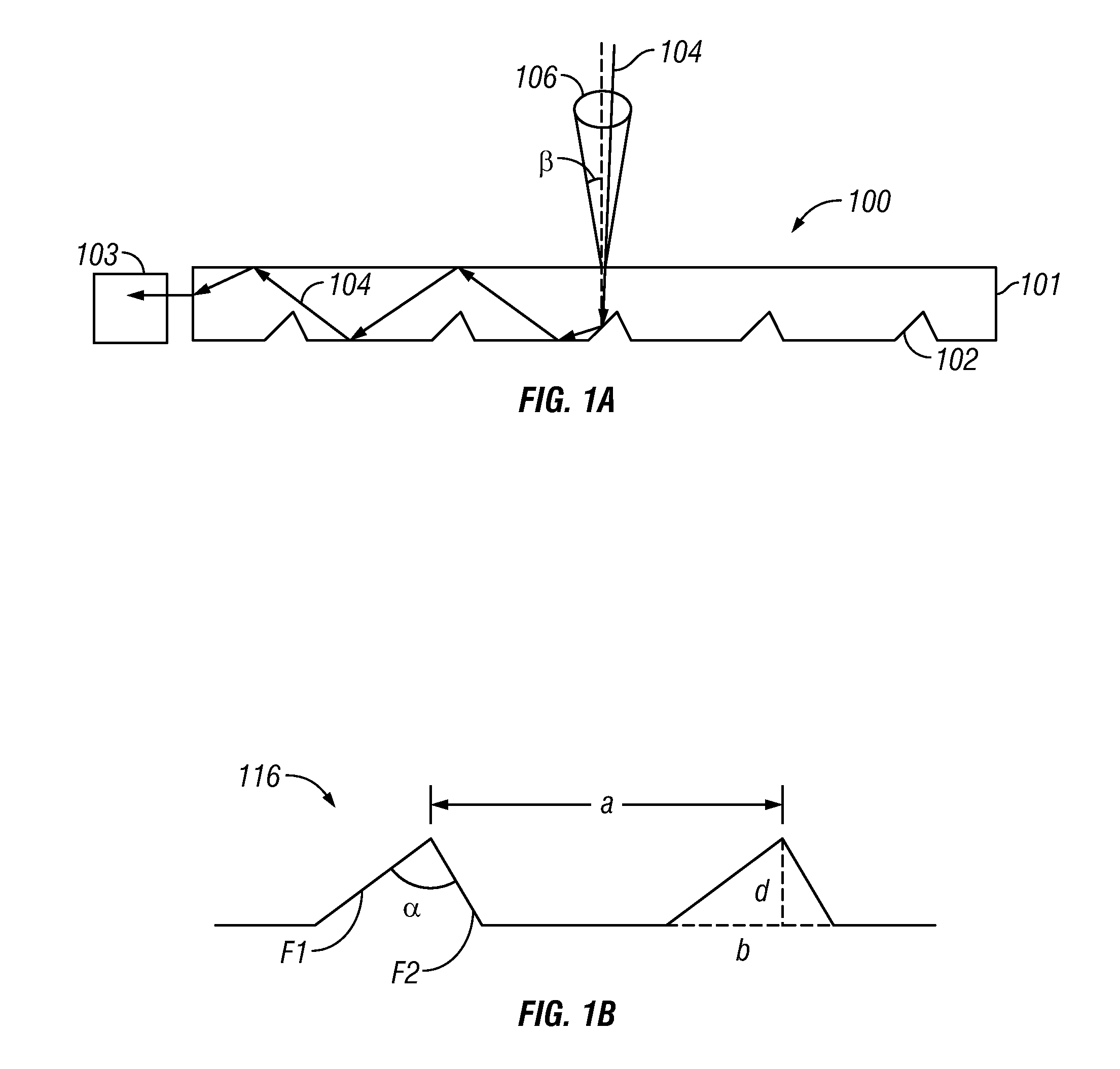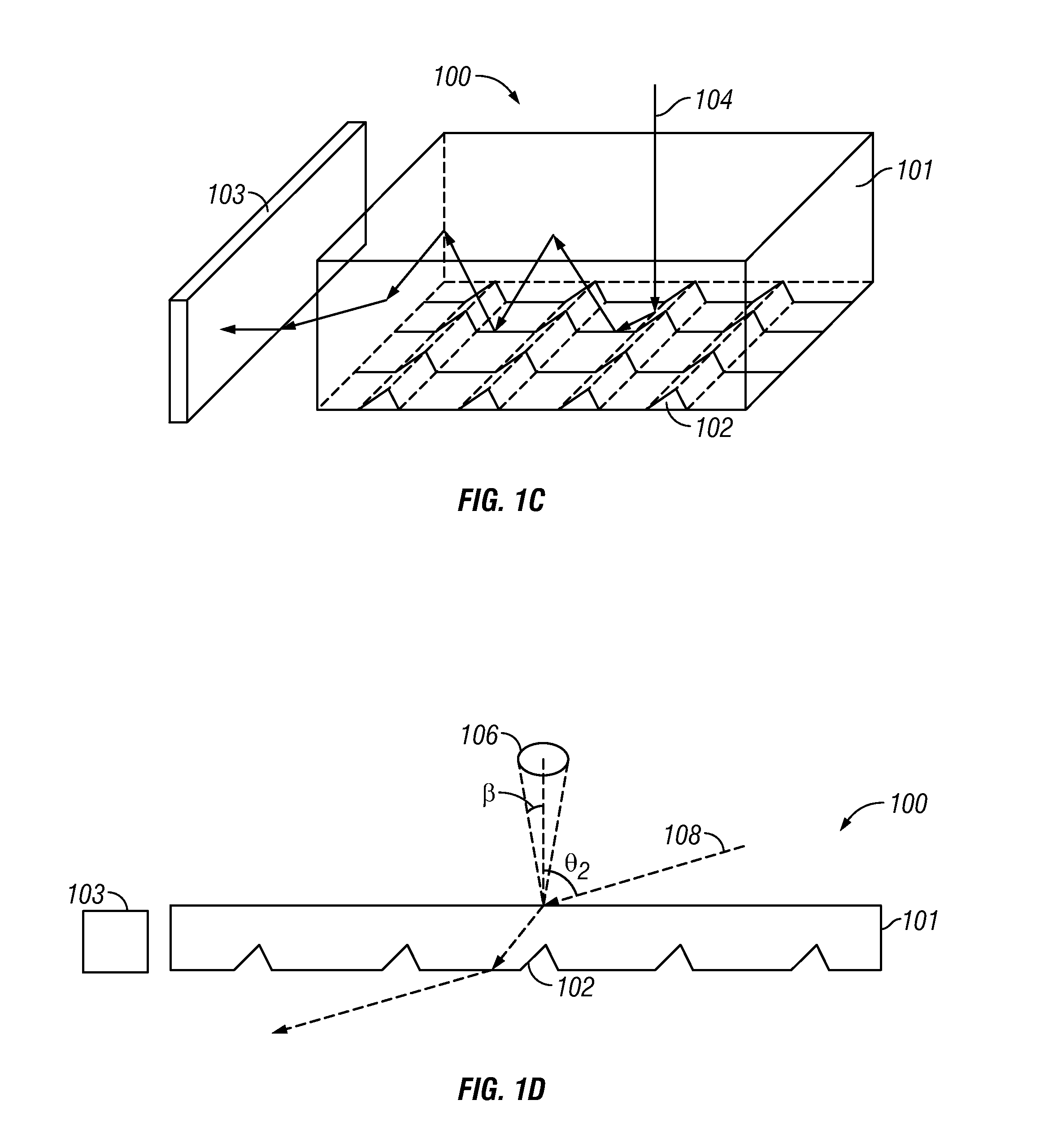Increasing the angular range of light collection in solar collectors/concentrators
a technology of solar collectors and concentrators, applied in the field of light collectors and concentrators, can solve the problems of low efficiency in converting light energy into heat or electricity, inability to overcome the variation in the amount of solar energy received, and the system employing lenses/mirrors tends to be bulky and heavy
- Summary
- Abstract
- Description
- Claims
- Application Information
AI Technical Summary
Benefits of technology
Problems solved by technology
Method used
Image
Examples
embodiment 100
[0038]One embodiment of a prismatic light guide used to couple ambient light into a photo cell is shown in FIG. 1A. The photo cell may be a photovoltaic cell or a photo detector. FIG. 1A illustrates the side view of an embodiment 100 comprising a light guide 101 disposed with respect to a photo cell 103. In some embodiments, the light guide 101 may further comprise a substrate (not shown). A plurality of prismatic features 102 may be disposed in the light guide 101. The light guide 101 may comprise a top and bottom surface including a plurality of edges therebetween. In the embodiment illustrated in FIG. 1A the prismatic features are disposed on the bottom surface. Light incident on the light guide 101 may be redirected into the light guide 101 by the plurality of prismatic features 102 and guided within the light guide 101 by multiple total internal reflections at the top and bottom surface. The light guide 101 may comprise optically transmissive material that is transparent to rad...
embodiment 2000
[0048]FIG. 2A illustrates an embodiment 2000 comprising a prismatic light guide 201. Prismatic features 202 are disposed rearward of the prismatic light guide 201. The embodiment further comprises an angle turning layer 209 disposed forward of light guide 201. In some embodiments, the angle turning layer 209 may comprise a holographic layer. In some embodiments, the angle turning layer 209 may comprise volume features (e.g. volume holograms). In some embodiments, the angle turning layer 209 may comprise surface relief features (e.g. surface relief diffractive features that form surface holograms or surface diffractive optical elements, etc). In some embodiments, the angle turning layer may comprise volume features and surface relief diffractive features. In some embodiments, the prismatic light guide 201 and the angle turning layer 209 may be laminated together. The angle turning layer 209 may be joined to the prismatic light guide 201 with an adhesive layer 207. In some embodiments...
embodiment 2010
[0051]The angle turning layer 209 may comprise a first set of volume, surface relief features or a combination thereof that are configured to turn the rays of light incident at a first angle to a second angle. In various embodiments, the second angle can be more normal than the first angle. The angle turning layer 209 may comprise a second set of volume, surface relief features or a combination thereof that are configured to turn the rays of light incident at a third angle to a fourth angle. The first and second set of diffractive features may be include in a single angle turning layer 209 or on multiple angle turning layers. For example, in FIG. 2B, the angle turning layer 209 comprises a first set of diffractive features such that ray of light 212 incident on the embodiment 2010 at an angle γ1 is turned by the angle turning layer 209 such that ray 212 is incident on the prismatic light guide 201 at near normal incidence and is subsequently guided within the light guide 201. The gu...
PUM
 Login to View More
Login to View More Abstract
Description
Claims
Application Information
 Login to View More
Login to View More - R&D
- Intellectual Property
- Life Sciences
- Materials
- Tech Scout
- Unparalleled Data Quality
- Higher Quality Content
- 60% Fewer Hallucinations
Browse by: Latest US Patents, China's latest patents, Technical Efficacy Thesaurus, Application Domain, Technology Topic, Popular Technical Reports.
© 2025 PatSnap. All rights reserved.Legal|Privacy policy|Modern Slavery Act Transparency Statement|Sitemap|About US| Contact US: help@patsnap.com



